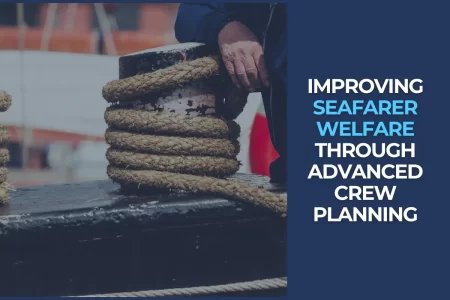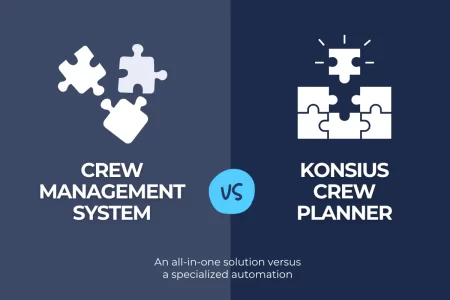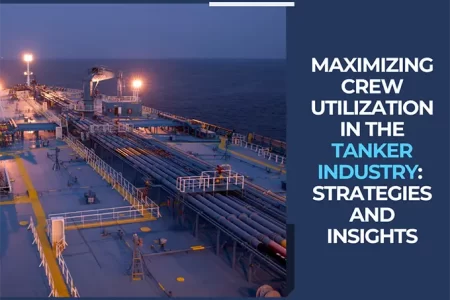How a Global Tanker Company Revolutionized Crew Planning During a Worsening Seafarer Shortage
The Maritime Industry’s Wake-Up Call
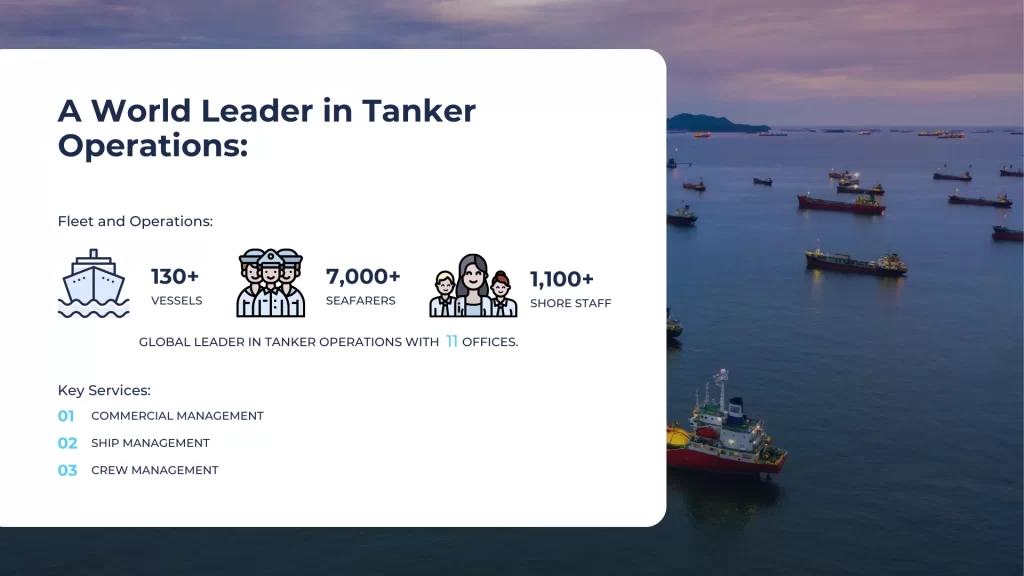
The maritime industry faces a severe officer shortage, with a projected global shortfall of 89,510 by 2026, according to the BIMCO & ICS Seafarer Workforce Report. This staffing crisis has become a pressing concern for shipping companies, threatening operational continuity, crew welfare, and safety standards.
For one global tanker company operating over 130 vessels with 7,000+ seafarers and 1,100 shore staff, these challenges became an urgent operational reality. Prolonged contract extensions, overworked crews, and inefficient manual planning were stretching the company’s limits. Recognizing that existing methods were unsustainable, the company made a decision: to embark on a comprehensive digital transformation of its crew planning operations.
The Challenge: Crew Planning in a Complex Environment
Managing a global fleet involves juggling numerous variables: crew rotations, compliance regulations, contract terms, and vessel assignments—all in real time. Before the transformation, the company relied heavily on manual crew scheduling tools like spreadsheets, resulting in:
- Manual-Driven Complexity:
Crew planners were overwhelmed by administrative tasks, spending hours processing assignments manually. This approach lacked transparency and consumed valuable time.
- Fragmented Processes:
Planning processes were siloed across teams and regions, creating a disjointed system prone to miscommunication and scheduling delays.
- Crew Fatigue and Retention Issues:
As officers were repeatedly asked to extend contracts, fatigue became a recurring issue, affecting job satisfaction, performance, and ultimately safety onboard.
The Company’s Objectives Became Clear:
- Enhance Crew Welfare: Minimize fatigue and create predictable work-life balance for seafarers.
- Increase Efficiency: Automate repetitive tasks to allow planners to focus on people, not paperwork.
- Boost Operational Stability: Establish data-driven processes that could scale with the company’s expanding fleet.
A Data-Driven Transformation: From Vision to Reality
The company’s digital transformation journey was designed with a step-by-step, data-driven approach. This phased strategy ensured that planners could adapt gradually while minimizing disruptions.
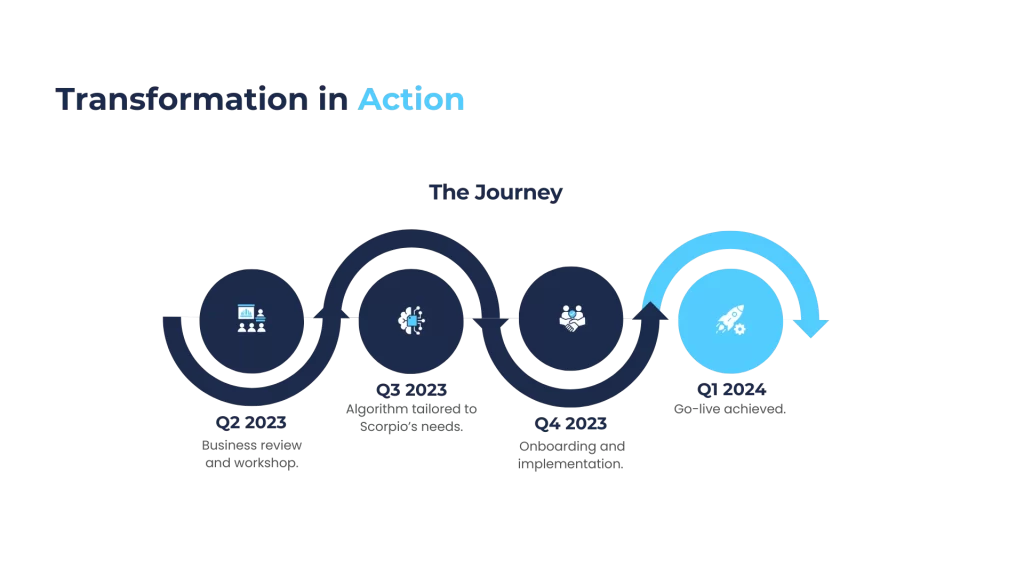
Phase 1: Business Process Review (Q2 2023)
Workshops involving crew planners, IT teams, and decision-makers were conducted to identify bottlenecks and set transformation goals. Key planning variables were mapped, and system requirements were defined.
Phase 2: Algorithm Customization (Q3 2023)
Konsius developed a custom algorithm tailored to the company’s unique operational demands, ensuring seamless integration of assignments, vessel compatibility, and compliance factors.
Phase 3: Onboarding and System Deployment (Q4 2023)
A detailed onboarding program began with training sessions and system testing. Crew planners were introduced to automated workflows while receiving continuous technical support.
Phase 4: Go-Live and Continuous Improvement (Q1 2024)
The system went live with data-driven crew scheduling processes replacing manual planning. A feedback loop allowed ongoing adjustments and improvements, ensuring a tailored fit to the company’s evolving needs.
Challenges Along the Way: Navigating Transformation Obstacles
Even with a well-defined roadmap, the company encountered several critical challenges:
1. Adoption Resistance
Planners initially resisted shifting from familiar spreadsheets to automated systems.
Changing long-standing habits required persistent effort.
Solution: Targeted training workshops were designed to build system confidence. Early adopters were empowered as “super users,” providing peer support and encouraging buy-in.
2. Managing the Learning Curve
Automation meant breaking away from manual processes—something that felt counterintuitive at first.
Solution: The implementation team adopted a step-by-step onboarding strategy, simplifying complex tasks into manageable stages. With an intuitive system design and daily support calls, users quickly adapted to the platform, ensuring seamless adoption.
3. Data Dependency
Automation depends on accurate and timely data inputs. Planners were initially wary of the system’s reliance on data accuracy.
Solution: Data validation processes were introduced, and a collaborative culture emphasizing data accuracy was cultivated. This strengthened system reliability and long-term trust in automation.
The Results: How Digital Transformation Rewrote the Playbook
The digital transformation delivered significant improvements, positively impacting multiple aspects of the company’s operations:
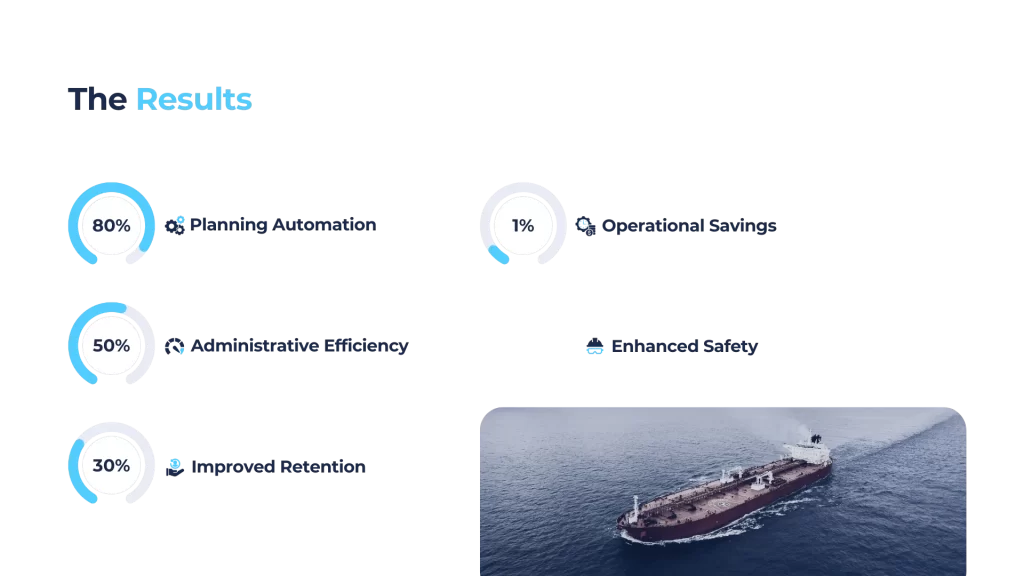
- Automated Crew Planning
- 80% Automation: Crew schedules were generated automatically, reducing manual workload by over half.
- Administrative Efficiency
- 50% Time Saved: Planners redirected time previously spent on data entry toward crew welfare management and HR tasks.
- Reduced Crew Extensions
- 30% Fewer Contract Extensions: Balanced schedules significantly reduced the need for unplanned contract extensions, boosting crew retention.
- Financial Impact
- 1% Crew OPEX Savings: Estimated at $2 million in 2025, driven by reduced recruitment and training costs, as well as overall optimization.
- Enhanced Safety
- Lower Fatigue Levels: Predictable rotations improved onboard performance and safety outcomes.
Broader Impact: More Than Just Numbers
Beyond the operational and financial gains, the company experienced a cultural transformation:
- Improved Trust and Transparency: Crew members appreciated the fairness and predictability of automated schedules.
- Planner Job Satisfaction: Freed from repetitive admin tasks, planners could focus on high-value activities like seafarer engagement and development.
- Scalability for Growth: The centralized planning system allowed the company to expand its fleet while maintaining the same number of planners.
Voices from the Frontline: Real Testimonials
“Automation has completely changed how we work. We now spend more time supporting seafarers instead of dealing with spreadsheets.”
— Crew Planner, Mumbai
“We’ve built better teams and improved fleet safety through data-driven planning. It’s been
- game-changer.”
— Technical Superintendent, Athens
“Managing scheduling complexities is now seamless, reducing planner stress while boosting operational efficiency.”
— Director, Crew Management, Dubai
Key Takeaways
This case study underscores how digital transformation can redefine maritime crew planning. By embracing advanced technology and data-driven processes, the tanker company turned industry challenges into opportunities—achieving operational excellence, crew welfare improvements, and significant cost savings.
For maritime organizations aiming to future-proof operations, this transformation offers a clear roadmap: invest in technology, empower teams through training, and maintain a culture of continuous improvement.
